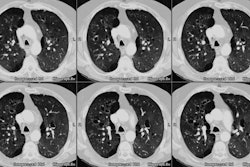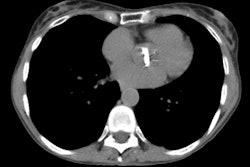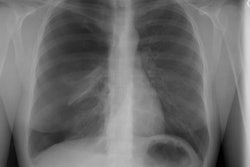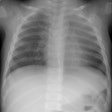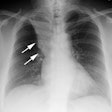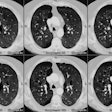N Engl J Med 2000 Jul 27;343(4):239-45
Effect of lung-volume-reduction surgery in patients with severe emphysema.
Geddes D, Davies M, Koyama H, Hansell D, Pastorino U, Pepper J, Agent P,
Cullinan P, MacNeill SJ, Goldstraw P.
BACKGROUND: Although many patients with severe emphysema have undergone
lung-volume-reduction surgery, the benefits are uncertain. We conducted a
randomized, controlled trial of the surgery in patients with emphysema. Patients
with isolated bullae were excluded because such patients are known to improve
after bullectomy. METHODS: Potentially eligible patients were given intensive
medical treatment and completed a smoking-cessation program and a six-week
outpatient rehabilitation program before random assignment to surgery or
continued medical treatment. After 15 patients had been randomized, the entry
criteria were modified to exclude patients with a carbon monoxide gas-transfer
value less than 30 percent of the predicted value or a shuttle-walking distance
of less than 150 m, because of the deaths of 5 such patients (3 treated
surgically and 2 treated medically). RESULTS: Of the 174 subjects who were
initially assessed, 24 were randomly assigned to continued medical treatment and
24 to surgery. At base line in both groups, the median forced expiratory volume
in one second (FEV1) was 0.75 liter, and the median shuttle-walking distance was
215 m. Five patients in the surgical group (21 percent) and three patients in
the medical group (12 percent) died (P=0.43). After six months, the median FEV1
had increased by 70 ml in the surgical group and decreased by 80 ml in the
medical group (P=0.02). The median shuttle-walking distance increased by 50 m in
the surgical group and decreased by 20 m in the medical group (P=0.02). There
were similar changes on a quality-of-life scale and similar changes at 12 months
of follow-up. Five of the 19 surviving patients in the surgical group had no
benefit from the treatment. CONCLUSIONS: In selected patients with severe
emphysema, lung-volume-reduction surgery can improve FEV1, walking distance, and
quality of life. Whether it reduces mortality is uncertain.

